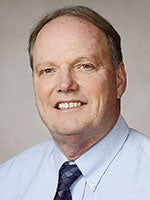State Chamber calls to ease business tax burden
Published 10:08 am Tuesday, February 9, 2016
By Sam Wilmes and Jordan Gerard
Minnesota State Chamber of Commerce’s top goal for 2016 is providing business property tax relief in an effort to let businesses flourish.
The Chamber of Commerce is looking to phase out the statewide property tax levy and remove the annual tax inflation index. Businesses and cabins are required to pay the tax in addition to their local property taxes.
Austin Area Chamber of Commerce Executive Director Sandy Forstner said it’s hard for businesses to hire, provide pay increases and make improvements.
“I think most Minnesotans can identify with the urban property tax. But when you look at the system, businesses are paying three times higher than residents already just by classification,” Forstner said. “When you add on statewide business property tax, with an automatic inflator built in, that burden has increased that much more.”
That tax burden can have a trickle down effect. Bill Budion, manager of the Austin Country Club, said when memberships go down and property taxes go up, it’s difficult to give staff raises and complete capital improvement projects.
“That’s our biggest challenge and it puts other challenges on us as well, healthcare, minimum wage and things like that,” Budion said. “That [has] really affected us as a business in the last five years and I don’t see it stopping.”
In a visit at the Herald and other area newspapers last week with city business leaders, Minnesota Chamber of Commerce Director of Communications Jim Pumarlo said business tax relief is needed with the state’s $1.2 billion surplus.
Pumarlo cited several reasons why the organization believes the statewide property tax levy needs to be phased out:
• Businesses have 12.4 percent of the total property market value but pay 32 percent of the total property tax.
• Businesses have an effective tax rate of 3.88 percent, the highest among property types.
• Businesses have the highest class rate at 2 percent.
Pumarlo urged legislators and the governor to pass tax relief in the 2016 session that supports job creators and reduces what he cited as an uncompetitive regressive tax.
Pumarlo said the Chamber of Commerce wants to encourage investment and growth by reducing the burden of uncompetitive taxes for all businesses.
The chamber wants the state to enact meaningful business property tax relief, enhance the research-and-development tax credit, conform the state estate tax with the federal threshold and reduce the tax burden for owners who report business income on their personal income tax return.
In Albert Lea, former District 27A Rep. Robin Brown, a DFLer, said while taking care of businesses is important, it is also important to realize that some services will have to be cut if you cut taxes on one group and don’t raise them on another.
Brown expressed reservation on spending the surplus when future economic conditions are unknown, and said infrastructure improvements are possible with the surplus.
However, Forstner supported using the budget surplus to ease the burden on Minnesota businesses. The surplus, he said, is a sign the state Legislature can recognize where the surplus came from and make changes.
“It’s an opportunity to reduce the burden on Main Street and help businesses grow so our economy moving forward is stronger still,” Forstner said. “I think it’s in recognition that we are all dependent on the success of businesses.”
The chamber wants the state to pass a long-term transportation plan that provides for strategic and sustained funding of roads, bridges and transit. The organization wants the state to use transportation-related revenue from its general fund to pay for additional investments and for the Legislature to pass a long-term plan that provides for strategic and sustained funding of roads, bridges and transit.
Another priority is for the state to invest in transit, linking any new funding to efficiency and reforms.
“We have two top priorities, one is property tax relief and two, transportation,” Forstner said. “We believe the state of Minnesota needs to put together a 10-year budget for transportation.”
Pumarlo’s visit was part of the chamber’s statewide tour prior to the 2016 legislative session to discuss the organization’s priorities and the effects they will have on communities.
“This is a good problem to have with surpluses,” Forstner said. “We think some of it should be given back to some of the pressing needs that need to be addressed. With all the surpluses, we don’t need new taxes. I think they have an opportunity to give some back.”






